All about magnesium sulfate fertilizer

With the help of fertilizers, you can not only improve the soil, but also achieve a larger yield. Magnesium sulfate is one of the most popular supplements with many benefits.
What it is?
This fertilizer is a very good source of magnesium and sulfur. High-quality magnesium sulfate has a positive effect on the yield of agricultural crops. Magnesium takes part in the process of photosynthesis, as it is the main nucleus in the reaction. In addition, it helps the root system of plants to actively absorb water. As for sulfur, this component is responsible for the growth of any plant and its yield. In the case of its lack, all biological processes can slow down, respectively, growth will stop.
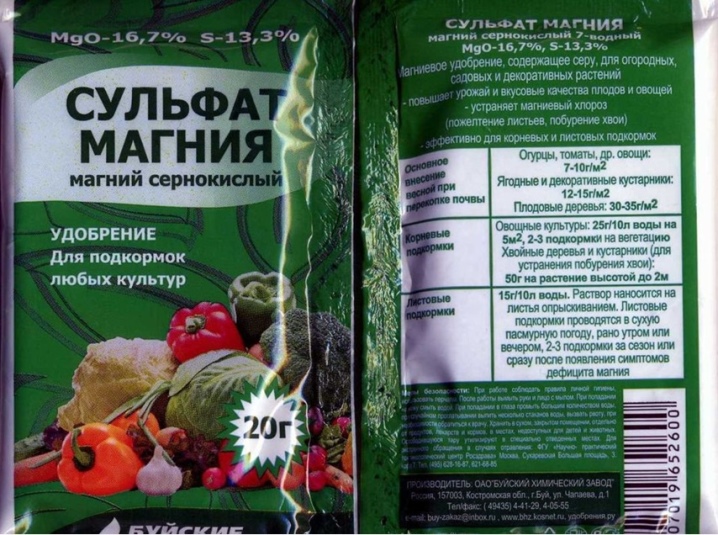
Composition and properties
This type of fertilizer can be of two types.
Granular
This top dressing is available in the form of gray granules, the size of which is 1-5 millimeters. They dissolve perfectly in water, and are also suitable for almost any culture. They contain 18% magnesium and 26% sulfur.
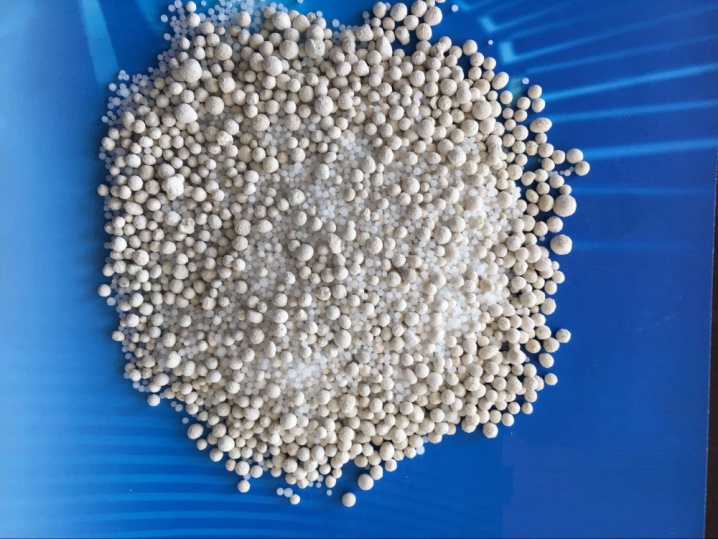
Crystalline
This feeding option is applied by spraying the plants. Fertilizers enter through the leaves. In turn, crystalline fertilizers are divided into two subspecies: mono-water and seven-water.
- One-water sulfate has the following substances: 46% sulfur and 23% magnesium. This ratio helps to reduce the consumption of the required norms by 3-4 kilograms per hectare.
- Seven-water magnesium sulfate has slightly fewer active ingredients in its composition. So, it includes 31% sulfur and 15% magnesium.

Signs of lack and overabundance
Most often, the lack of magnesium sulfate manifests itself in the form of chlorosis on plant leaves.
The lack of this fertilizer is especially acutely felt on too acidic soils.
It is necessary to consider how this manifests itself on plants separately.
Lack of sulfur
The signs of the lack of this element are the following:
- synthesis begins to slow down (both amino acids and proteins);
- nitrogen begins to accumulate in plants;
- an excess of nitrates appears;
- the sugar content decreases;
- in oil plants, the fat content is significantly reduced;
- leaves turn yellow;
- plants stop growing and developing;
- the number of pods on the stem is significantly reduced;
- the possibility of the appearance of fungal diseases increases;
- the corn cobs are not as full and large.
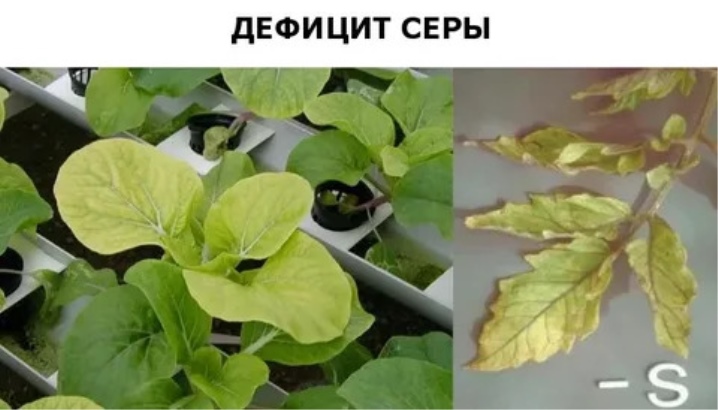
Lack of magnesium
In the case of a deficiency of this element, the following signs appear in plants:
- the yield of plants immediately decreases;
- ripening of fruits worsens;
- the synthesis process stops;
- the growth of the root system is deteriorating;
- chlorosis may appear;
- the leaves begin to fall off.
As for the excess of such an element as magnesium, it practically does not affect plants. But an overdose of sulfur can affect any of the crops. So, the leaves of plants begin to shrink and eventually fall off altogether.
To prevent this from happening, it is necessary to strictly monitor the dosage of the drugs introduced. This is especially true for irrigation, because in some cases the water can contain a large amount of sulfur.

Instructions for use
The main top dressing is usually applied in the spring, from March to April. It is distributed evenly over the entire area just before digging. However, in some cases, fertilizers can be applied in the fall, because the cold does not affect this at all.If you spray crops, then it is best to dissolve magnesium sulfate in water, where the temperature is not lower than 20 degrees.
In addition, it is important to remember that when planting perennial plants in a permanent place, magnesium sulfate must be added to each hole. There are several options for plant nutrition, which you need to familiarize yourself with in more detail.
Basal
When winter crops are fed, magnesium sulfate must be applied together with nitrogen fertilizers... Plus, it's best to do it. on the still frozen ground. For other plants, you can use normal spreading using a planter. Fertilization rates depend mainly on the crop grown and range from 60 to 120 kilograms per hectare.
If feeding is carried out by spraying, then magnesium sulfate must first be diluted in warm water. Only after complete dissolution can the plant be watered. It must be carried out within a radius of 45-55 centimeters from the trunk.
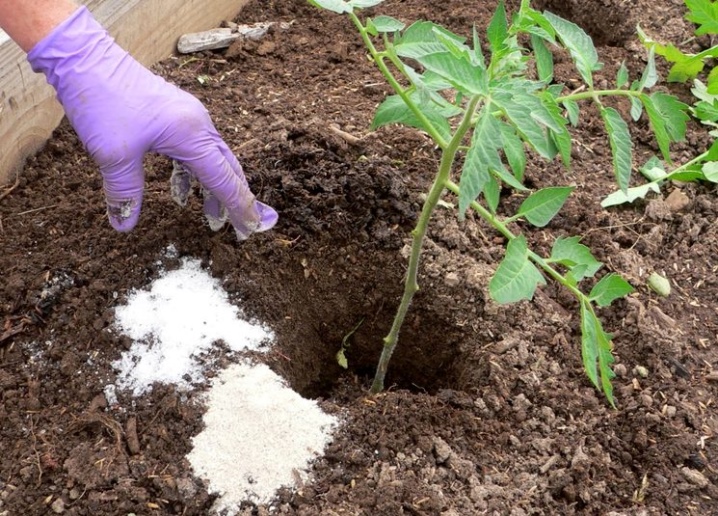
Foliar
Usually, such feeding is carried out early in the morning, late in the evening, or in cloudy warm weather. Experts do not recommend doing this on a sunny and hot day. Foliar fertilizers are most often applied in liquid form. Usually only plant leaves are sprayed. This will relieve them of magnesium deficiency.
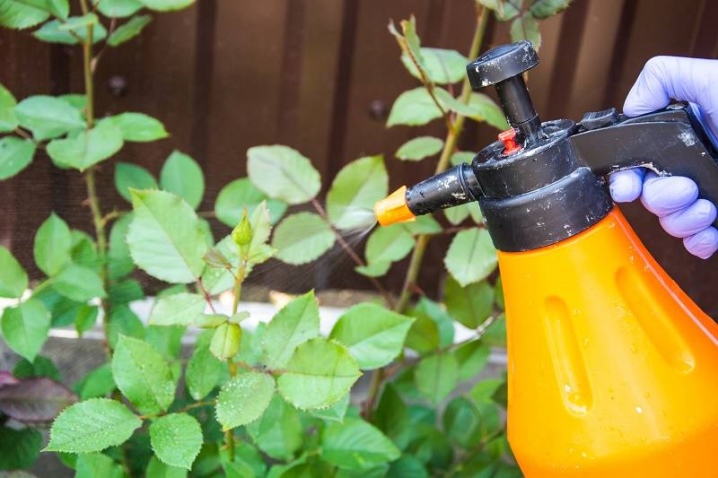
Gardeners also need to know how to feed different crops individually.
Crops for the garden
Cucumbers or tomatoes react very sharply to the deficiency of the described fertilizer. At first, the leaves begin to turn yellow, and then completely fall off. Then the fruits themselves begin to shrink. To avoid unpleasant consequences, it is necessary to add 10 grams of magnesium sulfate per 1 square meter. It is best to scatter fertilizers directly under the bushes. If you apply liquid fertilizing, then 30 grams of fertilizer will need to be dissolved in 1 liter of water.
Foliar dressing should be applied twice a month, starting from the time the buds appear. Root fertilizers are applied twice a season: during the appearance of buds and two weeks after that.
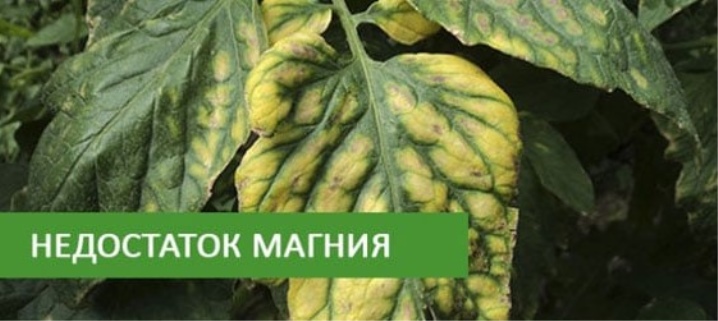
Magnesium deficiency is bad for carrots, cabbage or beets. Their leaves are usually covered with purple or red spots. In addition, cabbage may not even form heads of cabbage. The addition of magnesium sulfate is imperative. In the case of root feeding, it is necessary to add 35 grams of the substance to 1 bucket of water. This should be done immediately after the fourth leaf is formed. Exactly two weeks later it is necessary to re-fertilize. For spraying, 20 grams of magnesium sulfate will be enough for 1 bucket of water.
If this fertilizer is not enough for potatoes, the leaves on the bushes will begin to turn yellow and dry, and the bushes will immediately slow down their growth. To prevent this from happening, you will need to add 20 grams of magnesium sulfate per square meter. This is best done during the period of active growth of the bushes. If this is not enough, you can repeat the procedure after a couple of weeks.

Fruit trees
Trees are also sensitive to magnesium sulfate deficiencies. In some of them the leaves just turn yellow, in others they even fall off. To help the culture, it is necessary to add 35 grams of fertilizer to each hole when planting seedlings. In addition, root top dressing should be carried out annually. For its implementation, you can dilute 25 grams of this substance in one bucket of water. If the tree is very young, five liters of water will be enough, but for trees over 6 years old, a whole bucket will be required.
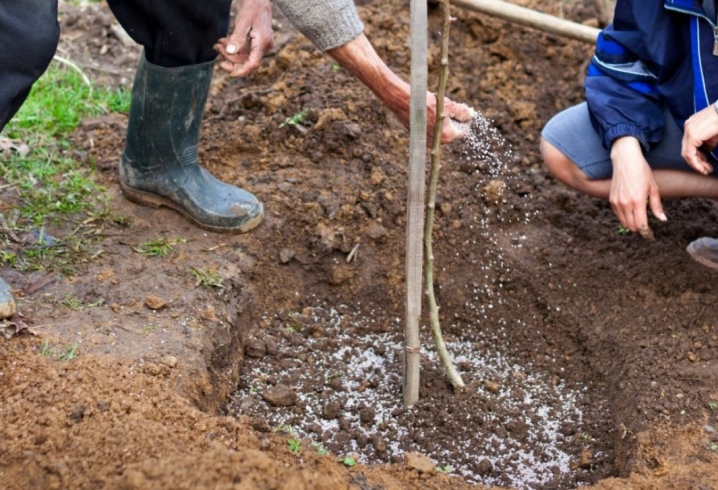
Coniferous trees
If magnesium sulfate is not enough, chlorosis will appear on conifers. At the very beginning, the leaves will begin to fade, then turn yellow, and at the end they will be covered with red or purple spots. To avoid this, you need to comply with the fertilization rates. For conifers, it will be enough to dissolve 20 grams of sulfate in 1 bucket of water.
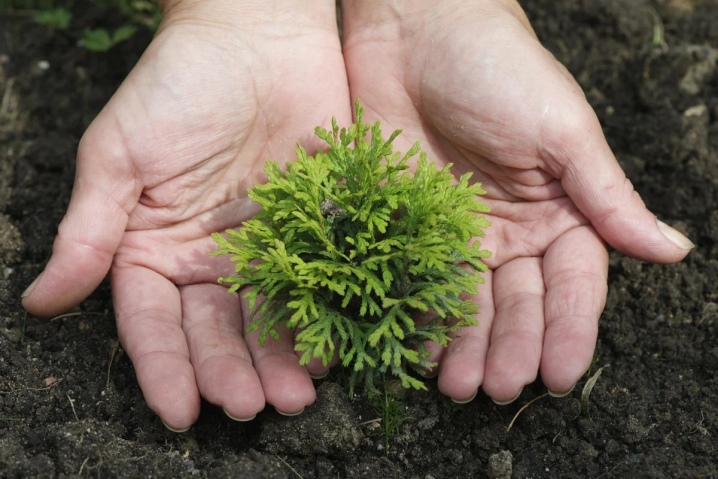
Shrubs
To feed berry bushes, when planting seedlings, it is necessary to add 20 grams of magnesium sulfate to each hole. Then you can apply fertilizers 2 or 3 times a season annually. Root feeding is carried out in early spring, and foliar feeding - at the beginning of flowering shrubs.
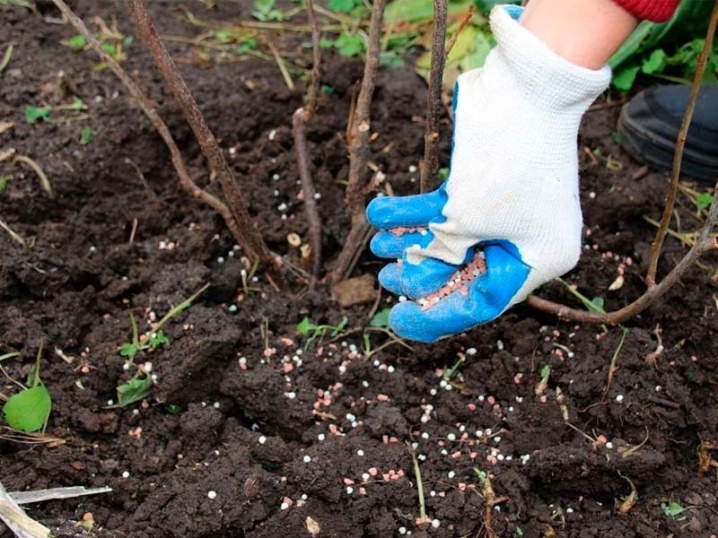
Flowers
The lack of sulfate is especially bad for flowers, for example, roses.... Their leaves begin to turn yellow and fall off. In addition, the buds become smaller, and the shoots do not grow. To prevent this from happening, experts recommend adding about 1 liter of a three percent solution under each bush.
To feed indoor flowers such as petunia or pelargonium, fertilizer must be applied immediately before planting. So, for a pot with a volume of 15 liters, 10 grams of magnesium sulfate and one top dressing per season will be enough. However, during the rest period, this should not be done.
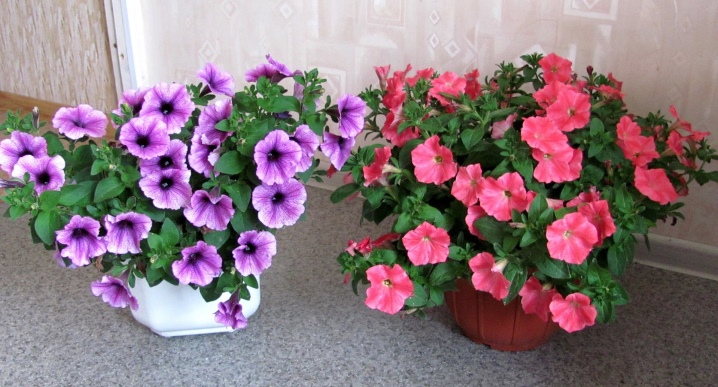
Storage and security measures
Before buying any fertilizer it is important to familiarize yourself with the necessary safety measures in advance... You need to be aware that magnesium sulfate dust can cause itching, irritation, redness, or even dermatosis in some people. To prevent this from happening, be sure to use gloves and a respirator. In addition, the skin should be covered with clothing everywhere.
You should also quit smoking during such procedures.... At the end of the procedure, be sure to wash your hands and take a shower. If, when spraying the plants, the solution gets on the skin, this area should be immediately rinsed with plenty of water.
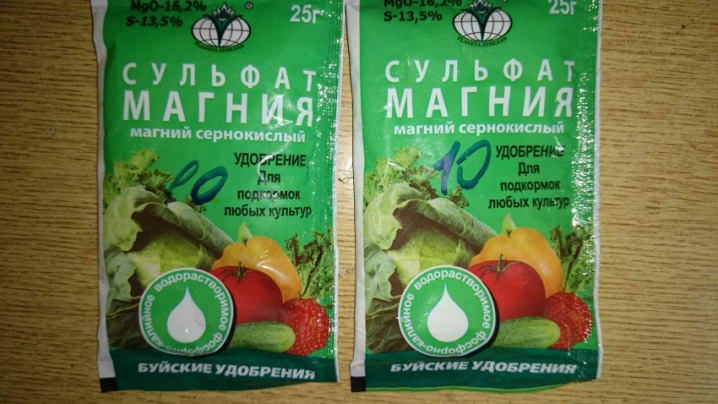
As for the storage of magnesium sulfate, its put as far as possible from the place where children or animals are... In addition, the storage location must be dry. If the fertilizer scatters, it must be collected immediately, and the place itself should be washed with a damp cloth.
Summing up, we can say that magnesium sulfate will be an excellent fertilizer for various plants. The main thing is to familiarize yourself with the rules for its introduction, as well as safety measures. Only in this case the plants will delight everyone with their beauty.
In this video, we suggest that you familiarize yourself in more detail with magnesium sulfate fertilizer and its use.













The comment was sent successfully.